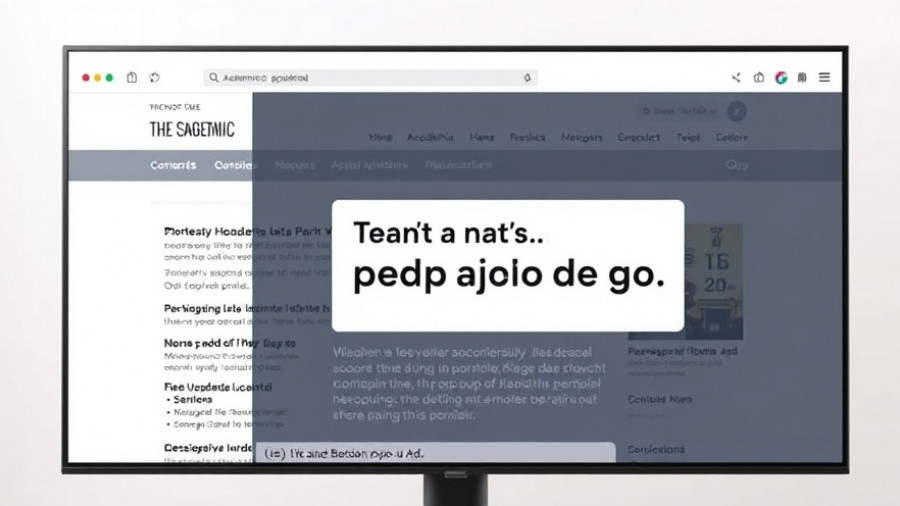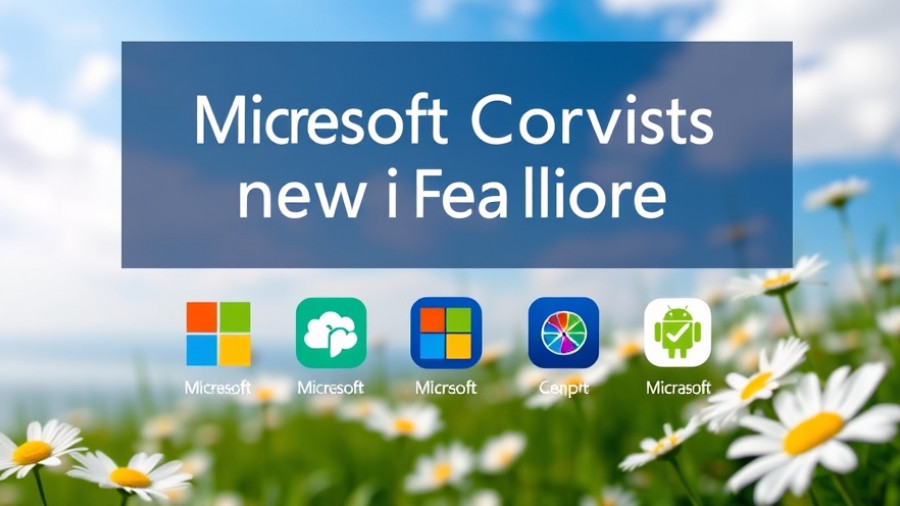
Should Microsoft Enter the Wearable AI Hardware Space?
In a world increasingly influenced by artificial intelligence, the question of whether Microsoft should develop its own wearable AI hardware incorporating its powerful Copilot functionality is gaining traction. With tech giants like Meta launching products like Ray-Ban display glasses that integrate AI, the landscape is ripe for Microsoft to solidify its place in the wearable tech market.
The Competitive Landscape
Recent collaboration between Intel and NVIDIA highlights the evolution of computing hardware driven by AI. Their partnership aims to produce chips that blend Intel's processing prowess with NVIDIA's cutting-edge RTX GPU technology, setting a high standard for performance in gaming and AI applications. Microsoft faces the challenge of competing in this innovative environment, where efficient hardware and advanced software must work in harmony.
What Could Microsoft’s Copilot Wearable Look Like?
Imagine a wearable device that seamlessly integrates Microsoft Copilot—the sophisticated AI assistant that helps users navigate tasks more efficiently. Such a device could be designed for user convenience, utilizing features for productivity, communication, and smart assistance on-the-go. It would empower users with real-time insights and actionable data, reshaping how they engage with technology daily.
Market Potential and Consumer Interest
The demand for AI-integrated devices is on the rise. As demonstrated by the popularity of smart glasses and wearable fitness trackers, consumers are increasingly open to wearable technology that enhances their lives. Microsoft's venture into wearable AI could not only capture a significant market share but also strengthen its ecosystem, seamlessly connecting various Microsoft products and services.
Technical Considerations and Challenges
Developing wearable technology comes with its own set of challenges. The device must feature advanced battery life, lightweight design, and robust data processing capabilities to ensure it meets users' expectations. Therefore, Microsoft would need to leverage its existing technology and expertise while innovating new solutions to address these demands.
Future Predictions: The Role of Microsoft in Wearable AI
Looking ahead, the integration of AI in wearable technology is not just a trend but a forecast of how we will interact with the digital world. If Microsoft were to commit to creating a Copilot wearable, it could potentially transform the field, driving further competition and innovation. As AI technology evolves, users might expect even more intuitive and adaptable devices that can predict their needs.
Final Thoughts on Microsoft’s Next Move
In conclusion, the launch of a Microsoft Copilot wearable could redefine the boundaries of AI-assisted technology. As competitors continue to innovate, Microsoft’s ability to integrate its AI expertise into a physical product holds substantial promise. Engaging in this space could enhance brand loyalty and open new avenues for growth and expansion. For now, the tech community eagerly awaits Microsoft's next decision—will it take the plunge into the world of wearable AI?
 Add Row
Add Row  Add
Add 




Write A Comment